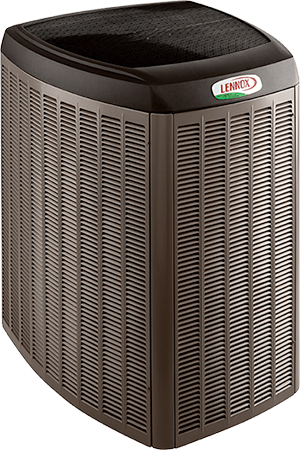
You need to clean your filters every two to three months to keep your air conditioner running at optimum performance. If you live with shedding pets or in a dusty area, clean the filters more often, probably monthly. The filter’s purpose is to capture dirt, pet dander, pollen, and other contaminants to ensure that your AC sends cool and clean air into the house.
A clogged filter restricts airflow, so your unit won’t cool the house as it should. The grime strains your AC, making it work extra hard, resulting in higher utility bills. Further, it overworks the unit, some components begin to fail, and you may need to replace your system sooner than expected. Even worse, the system may recirculate the contaminants into your house, lowering the indoor air quality. Here are simple steps to guide you in cleaning your air conditioner filter.
1. Deactivate the Power Supply
Any time you want to service your air conditioner, shut the power off for safety purposes. You can locate the shut-off box near the outdoor unit. If you’re having trouble finding the main service panel, disconnect the system from the breaker box.
Opening the air conditioner while it’s still running is extremely hazardous. It might cause unfiltered air to recirculate throughout the house once you take off the filter. The evaporation coils and other internal components can also collect dust which can damage your unit.
2. Remove the Air Filters
You can now remove the outer case of your unit to take out the filters. Read through the instructions manual to know how you should take out the filters. For the ducted air conditioning system, open the return air grill to access the filters. For the split system air conditioner, open the front panel.
Depending on the model, you need to unscrew some air conditioner covers, while in others, you only need to push a tab. Place the cover aside and slide out the filters carefully. Take note of how the filters look like while in place. This information will help you fit them back correctly.
Check to ensure that you have a washable and not disposable filter. You can confirm this from the user manual. If your unit uses the disposable filter, get a clean one from your local store and check the size to ensure that you buy the right fit. Discard the old filter appropriately. If you have a cleanable air filter, proceed to the next step.
3. Dust the Filter
You can use either a vacuum or brush to remove excess dust from the filter. It’s a good idea that you do this step outside to prevent spreading dust particles throughout the house. Set the vacuum at low or medium speed, then run it up and down the filter to suck out grime and other dirt particles. Hold the filter carefully and avoiding pressing the vacuum too hard on the delicate filters. Alternatively, brush the filter down with a soft brush to remove loose dust or grime.
4. Clean It in Water
First, refer to your user manual to determine whether your filter is water-friendly. If it is, fill a container with lukewarm water, add a mild detergent and mix well till the water lathers. Submerge your filter into the soapy solution and allow it to soak for at least an hour. You can soak the filter longer if it’s too grimy.
Use your hands to scrub out dirt until thoroughly clean. Next, you need to rinse the filter and ensure that there is no residue left. To achieve this, hold the filter with your hand, introduce a hose on one side, and flush it with water to remove soap and any other remaining dirt. Flip the filter to the other side and do the same. Repeat the process until clear water starts coming out.
5. Disinfect the Filter
Make a solution of vinegar and water, then put it in a spray bottle. If you use a cup of vinegar, put the same amount of water. Spray the filter with the solution on both sides to kill harmful bacteria or germs. Allow the filter to sit for around 10 minutes, then rinse it again under running water.
6. Allow the Filter to Air Dry
Put several dry newspaper pieces or a clean cloth on the floor, then place your clean air filter over the surface in a leaned position against a wall. Allow it to dry completely before putting it back into the air conditioner. For better results and to prevent mold issues, it would be best to air dry the filter in the sun for around 20 to 30 minutes.
7. Reinsert the Clean Filter
Now you can fit back the clean filter to the air-conditioning unit. Some filters even have a directional arrow that indicates the side your filter should face. Put the other components in place, then close the cover.
However, if you notice that you have an extensively damaged or worn-out filter, you need to replace it with a new one. After fitting back the clean or new filter, you can now restore the power and enjoy cleaner airflow.
8. Activate the Automatic Cleaning Function
It’s worth noting that some modern air conditioners come with self-cleaning functions. If yours has such a feature, you only need to set it to clean your filters regularly. The unit contains an internal cassette and a brush device that help clear off dirt particles from the filter. The system then deposits such buildups in a small chamber and blows them outside. The auto-clean function also helps prevent biological contaminants’ growth in your filters by eliminating moisture in the unit.
Bottom Line
You must invest in regular filter cleaning to maintain good indoor air quality. If you have little children at home, the elderly, or people with compromised immunity, a clean air filter is of paramount importance. It helps trap most air contaminants to minimize asthma attacks, allergies, or other respiratory issues. You can easily handle the cleaning steps outlined above. However, if any of the cleaning procedures appear somewhat complicated, it’s okay to ask for help from a professional HVAC technician. At times the cleaning process might not be easy, mainly if you aren’t used to such tasks. You might uncover molds, insect droppings, and other awful things.
To avoid such hassles, seek professional help. An expert has experience in solving such issues, they have handled similar situations before, and they can thus complete the task as quickly as possible. Again, you might not have the right equipment like a high-power vacuum, so you won’t achieve the same results from what a professional will deliver. A trained technician has the experience to handle all your air conditioning units with care without putting your family members or property at risk.
Whenever you need professional help to improve indoor air quality, reach out to Velox Air, Inc.. We have highly qualified technicians dedicated to meeting our clients’ unique needs. Our company deals with heating system and AC installation, repair and maintenance services. You can also contact us for ductwork installation and repair in Phoenix, AZ, and the surrounding areas. Call our reliable team today and book an appointment to enjoy our top-notch services.





